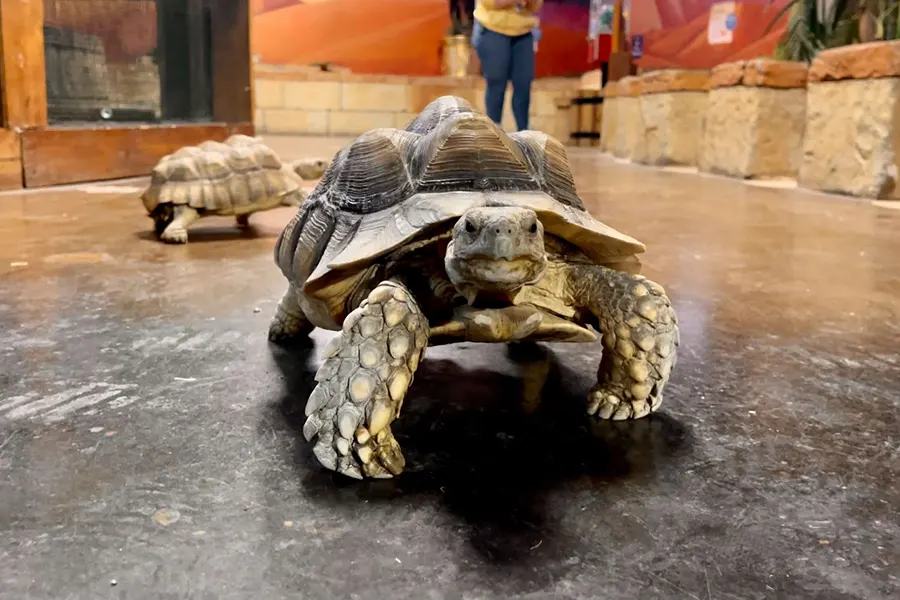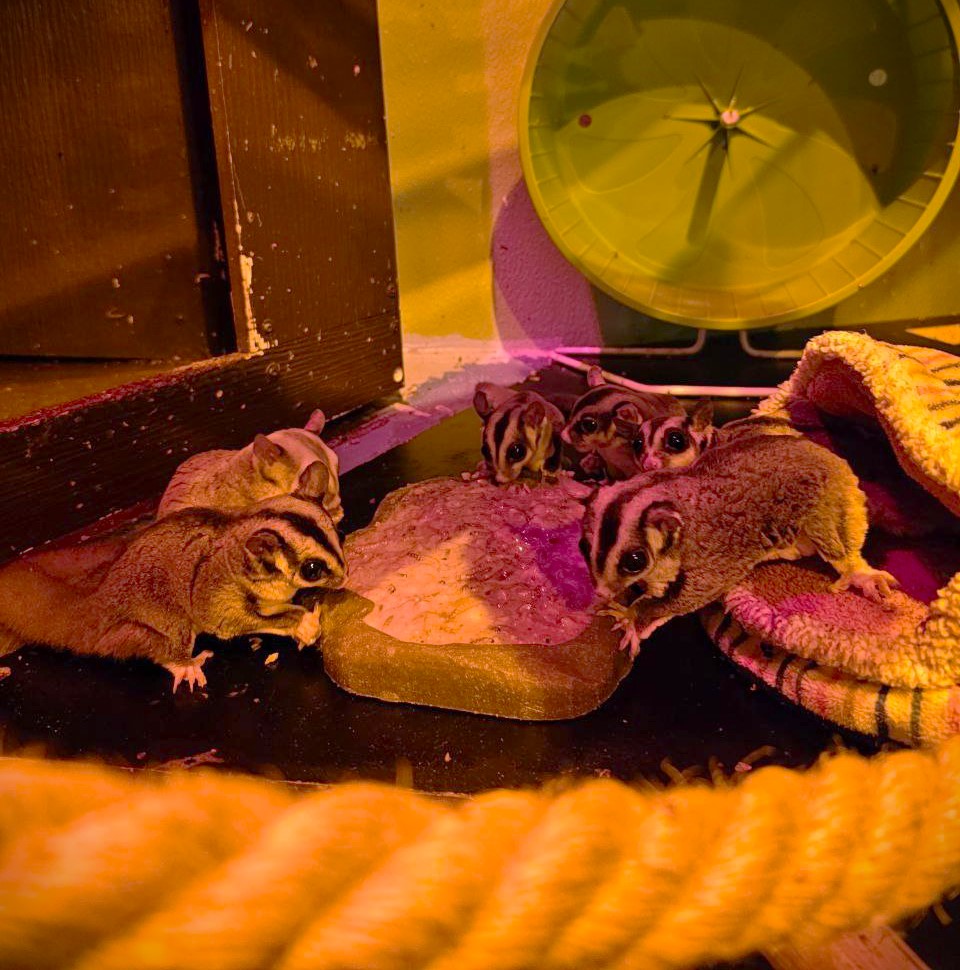What’s the Difference Between a Turtle and a Tortoise?
Share it on:

SeaQuest is excited to celebrate World Turtle Day® on May 23! In order to raise awareness and educate about conservation efforts for turtles and tortoises, it’s essential to know the difference between these shelled reptiles. There are over 350 species of turtles and tortoises in the world. So what are the differences between turtles and tortoises? The biggest distinction is where they live. Tortoises live strictly on land whereas turtles spend most of their time in or near water. So while they do share similarities, though, it’s easy to get the two confused.
Tortoises are actually Turtles!
Here’s a big surprise: Tortoises are turtles, but not all are tortoises! The general word “turtle” has been used to reference any reptile with a shell on its back, but there are several differences between these two unique creatures.
Turtles and tortoises are not only reptiles but also members of the same order of animals known as Testudines. There are 13 families of turtles, including tortoises, soft-shelled turtles, snapping turtles, and sea turtles, to name a few. Both types of animals tend to be timid and solitary creatures, though neither one is very territorial. They both lay eggs on land, usually by burying them in nests.
Fun Facts About Tortoises
Tortoises are land-dwelling creatures. So, unlike turtles, they don’t have flipper-like hind legs. Instead, they have large column-like hind legs that help support their strong and heavy stature.
Tortoises are mainly herbivores, so they love to snack on plants and fruits.
- Tortoises live in a wide range of habitats, from dry deserts to tropical forests.
- They only need water for drinking and bathing.
- Tortoises have a lifespan of about 80-100 years, but some species have been known to live for over 200 years!
- Depending on the species, an adult tortoise can grow from 6 inches to 5 feet and weigh up to 550 pounds!
Fun Facts About Turtles
Turtles spend most of their time in the water, and it shows! Their bodies are built for it, with shells flatter than tortoises to help with streamlined swimming. They have flipper-like hind legs that help them glide through the water. Turtles are omnivores. Their diet consists of both meat and plant vegetation. They can sometimes be seen snacking on fish or bugs.
- There are many different types of turtles. Mississippi Mud turtles are tiny little creatures only growing 4 to 6 inches. Leatherback Sea turtles can weigh up to 2000 pounds!
- Turtles have a lifespan of anywhere from 10 years up to 100 years.
- If they are a sea-dwelling species, turtles have special tear glands that help them rid their bodies of excess salt.
@visitseaquest The struggle is real #turtles #reptile #funny #animalsoftiktok #fyp ♬ original sound – Joe Gunn
How Are Turtles and Tortoises Similar?
Turtles and tortoises cannot crawl out of their shells, which are permanently attached to their spine and rib cage. They are both ectothermic, which means they warm their bodies from outside sources like the sun. They cannot warm their bodies from the inside as humans do. Both can also feel pressure and pain on their shells, just like humans can on their fingernails.
How To Tell a Turtle from a Tortoise
- Turtles have thinner, lighter, and more water-dynamic shells that help with their swimming. Tortoises have more rounded dome-like shells that are much heavier and more robust.
- Turtles have webbed feet, while tortoises have stubby feet with sharp claws.
- Remember, tortoises spend most of their time sunbathing on land, while turtles like to live it up in the ocean or river waters!
Celebrate World Turtle Day at SeaQuest! We are committed to protecting our world’s oceans, wildlife, and endangered animals. We focus on how to be proactive in finding solutions. To learn more about the difference between turtles and tortoises, book your visit today at any of the following locations: Utah, Las Vegas, Dallas-Fort Worth, Sacramento, Minneapolis, Lynchburg, New Jersey.




